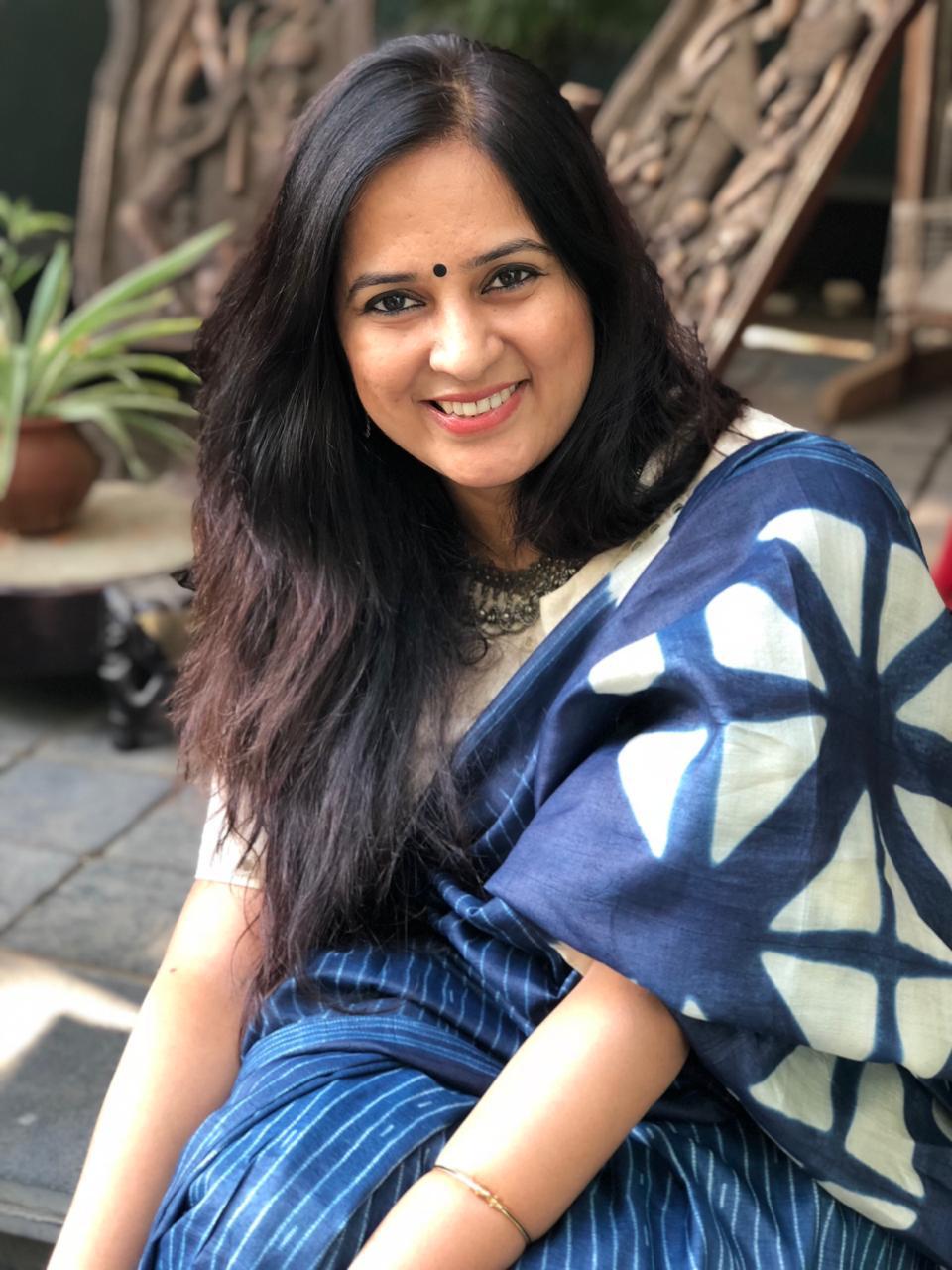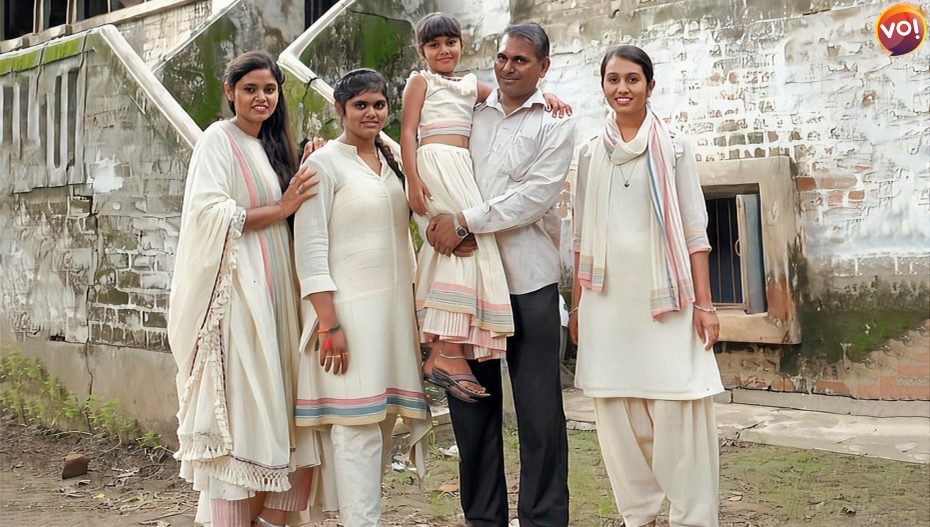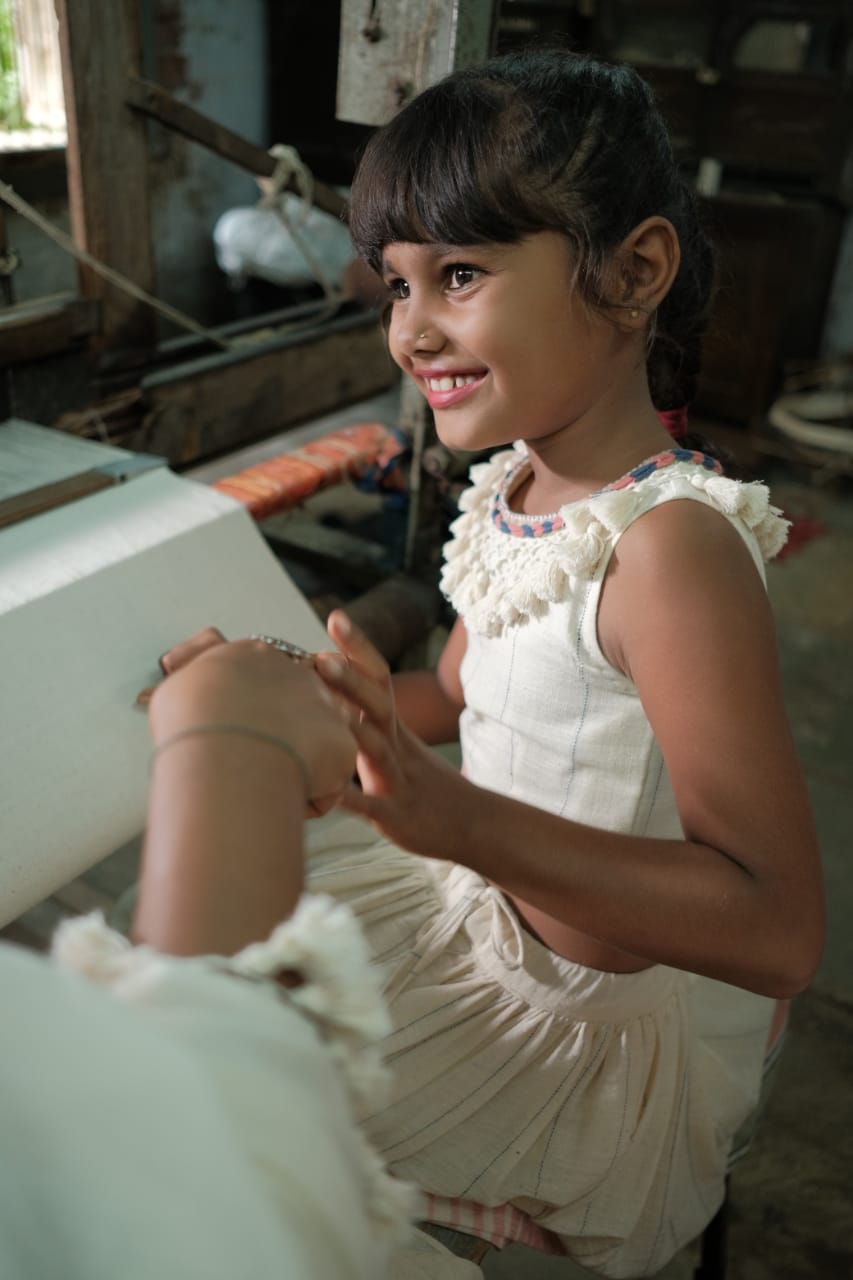Fashion need not necessarily come at the cost of the environment. Couturier Purvi Doshi has imbibed this philosophy in her design since the launch of her label in 1992. The PETA-approved designer doesn’t use silk as the Jain philosophy doesn’t approve of harming any creatures, big or small. (FYI: 10,000 silkworms are killed to produce one silk sari.)
When it comes to celebrating National Handloom Day on Aug 7, she gives insight into the life of an artisan whose life changed 360 degrees due to their collaboration. Eventually, the weavers daughters modeled Doshi’s brand. For Purvi, her value system and business ethics come first even while creating fashion. Here is one such instance.

When she bumped into an artisan at Amdavad Haat in 2017, a life-transforming collaboration took place. “When I saw handwoven shawls and sarees of intricate motifs at Amdavad Haat, I instantly fell in love with it. I later realised it was made by Ladhubhai, Babubhai’s father. I wanted to imbibe his art into my fashion and I requested him to create running yardage with those ancient motifs. He connected me to his son and both worked to create traditional salvage and motifs like chakra, dholki, choukukh, and more.”
The family of artisans is in the practice of dying, spinning, weaving, washing, packing, and preparing the whole design of 2-3 meters in a day. Purvi’s order of 500 metres would take them five months. At this juncture, Babubhai who till then was just a weaver wanted to explore the entrepreneurial side of his work.
“He began outsourcing work, creating 10 looms instead of just one, and began honing his business skills. One life was changed and that was deeply satisfying for us.” Purvi said.
After eight months of working together and passing through many challenges of yarns, colors, timelines, designs they are ready with more than 1500 meters of woven kala cotton textiles. They launched the contemporary collection on National handloom Day 2018.
Real people, Real fashion
With more than 3,000 metres of organic fabrics produced and sold in the past four years; she wanted to pay tribute to weavers and she made Babubhai’s daughters their official models. “I’m elated to see the girls wearing what they are making for years. They are posing as our models and I feel the circle of goodness has completed in a true sense with the deep feeling of giving back to the community. Looking good should feel fabulous, today we are feeling fabulous. This is our way of celebrating the National Handloom Day in its truest sense.”
Trace your fashion
We decided to go for transparency in fashion by coming up with “Traceability app” whereby scanning the barcodes on the garments one can see all the details like where the cotton crop is grown, who have woven it, who has dyed it, who has stitched it, who has embellished it.
Reviving Kala cotton
Kala cotton is indigenous to Kachchh and organic, as the farmers do not use any pesticides and synthetic fertilizers. It is a purely rain-fed crop that has a high tolerance for both disease and pests and requires minimal investment. It is resilient in the face of difficult land conditions. It forms a strong, coarse, stretchable fiber that is often used in denim.
Due to her initiative, Kala cotton with traditional designs entered mainstream fashion. Many weavers who were earlier making shawls, rugs, sarees, etc started making yardages. Kala cotton originally popular for its stripes and checks weaves, now got popular for motifs like choumukh dholki chakra, etc.
“As they say when you start walking in the right direction you start doing the right things more and more. This is just the beginning,” concluded Purvi. On this note, Happy National Handloom day.















